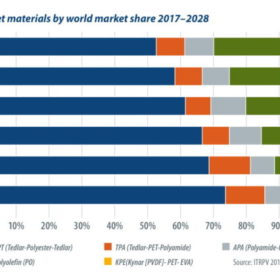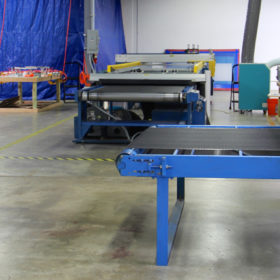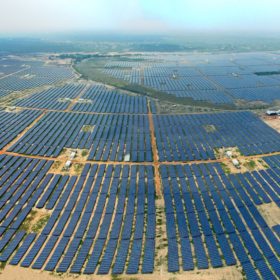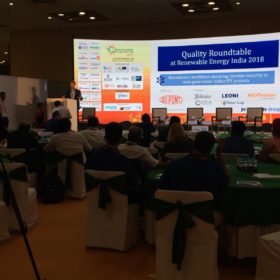PM Modi: 40% electricity generation from non-fossils by 2030, up to $80 billion for PV manufacturing
India’s Prime Minister kick started the first Assembly of the ISA, the second IORA Renewable Energy Ministerial Meeting, and the 2nd Global RE-Invest yesterday in Greater Noida. The agenda of the day? Universal access to solar energy at affordable rates; securing 40% of India’s electricity generation from non-fossil fuels by 2030, and allocating up to US$80 billion to boost domestic PV manufacturing.
The long read: Backsheets to the future
As backsheet manufacturers aim to keep up with cost reductions up and down the PV supply chain, new processes and materials are appearing, with claims to offer better performance as a moisture barrier, as well as better acetic acid permeability and higher reflectivity, among other features. pv magazine examines the state of the market for PV backsheets, and takes a look at some of the new material innovations that are gaining ground with module manufacturers.
SECI defers 10 GW solar auction, again
India’s much-hyped 10 GW solar auction has hit another roadblock. The state-run Solar Energy Corporation of India (SECI)’s tender bids for 10 GW of ISTS-connected solar PV power projects linked with 3 GW (per annum) solar man-ufacturing capacity, has now been extended to October 12.
Triton to manufacture solar batteries in Andhra Pradesh
U.S.-based Triton Solar, LLC has signed a Memorandum of Understanding (MoU) with the Andhra Pradesh Economic Development Board (APEDB) to set up a solar battery manufacturing unit in the state under a public-private-partnership (PPP) model.
Better bifacial adoption, catalyzing innovation focus of Future PV Roundtable at REI
pv magazine’s Future PV Roundtable, held at the 2018 Renewable Energy India (REI) Expo in Greater Noida, discussed how India can better adopt bifacial solar cell and module technology – the future of power generation. Prominent industry speakers also put forth their views on how standards can catalyze solar innovation for India-specific challenges, and on PV materials and components for enhanced module efficiency and recycling.
Tamil Nadu targets 400% jump in solar capacity by 2022
The state government is proposing a range of incentives and mandates to drive PV and solar thermal installations to almost 9 GW within four years. Under the proposed policy, 10% of the public fleet would be replaced by electric vehicles.
Saft buys out JV partner and announces lith-ion investment
The historic French brand says it will focus on rail, telecom and infrastructure, but environmentalists hoping the move finally heralds a breakthrough for electric vehicles in one of the world’s biggest transport markets appear set to be disappointed.
pv magazine Quality Roundtable, REI: Innovation, investment and improving PV installs
pv magazine’s Quality Roundtable at the 2018 Renewable Energy India (REI) Expo, took place in front of a packed audience. It discussed current problem areas; how solar developers and solution providers can improve the quality of Indian solar PV installations; and innovative financial instruments to reduce the cost of debt and scale up infrastructure investment.
REI 2018 opens its doors with a bang
The 12th Renewable Energy India (REI) Expo opened its doors today; the booming music and bright sunshine mirroring India’s ambitious goals to become the biggest RE market in the world. In the opening conference, the government’s commitment to renewables was underlined, while BNEF said the country will have one of the highest penetrations of solar and wind, globally, by 2050. Companies are also starting to look to India for manufacturing opportunities, although the landscape is still filled with uncertainty.
Top 3 developers commissioned one-fourth of utility-scale PV projects
Of the total 9,538 MW of solar capacity commissioned between October 2017 and September 2018, Adani bagged the lion’s share at 11%, followed by Acme (7.5%) and Renew Power (7.3%), finds Bridge to India. The analyst company also tracks tariff trends between 2016 and now.














